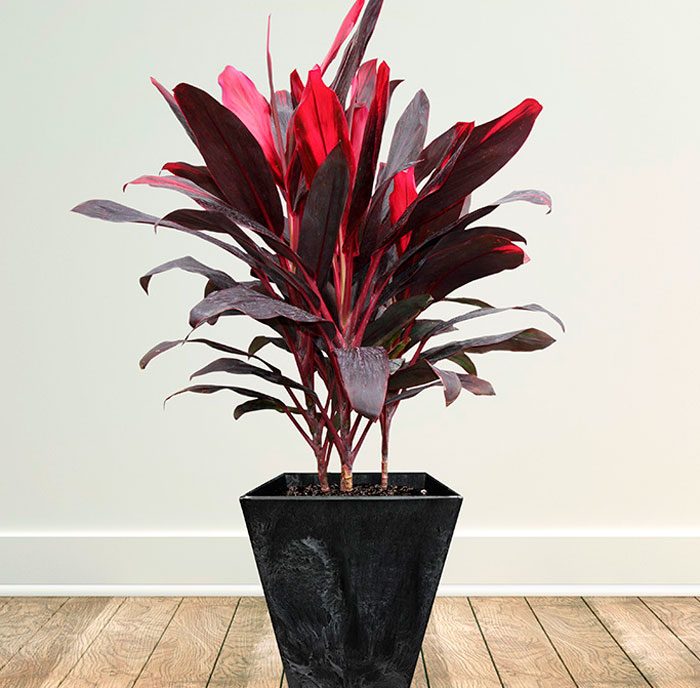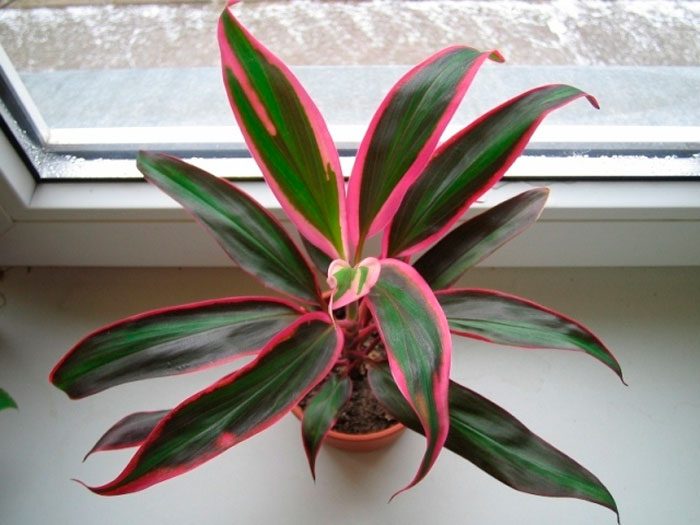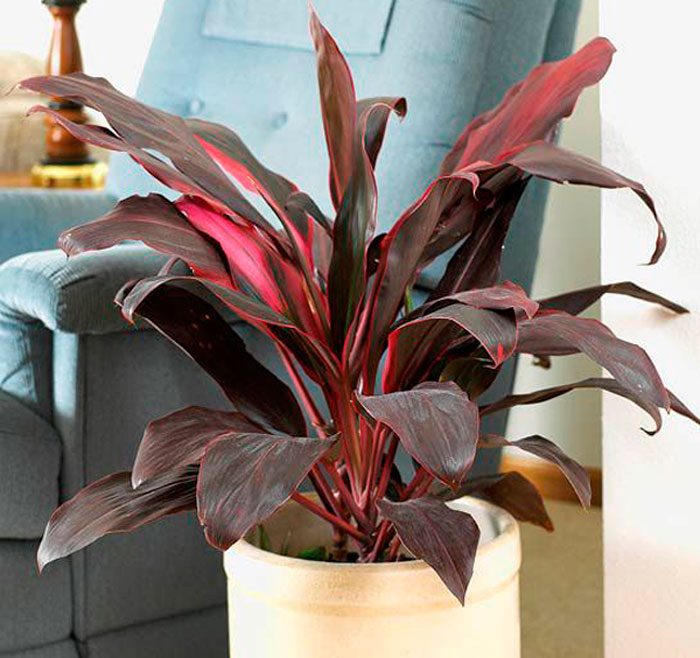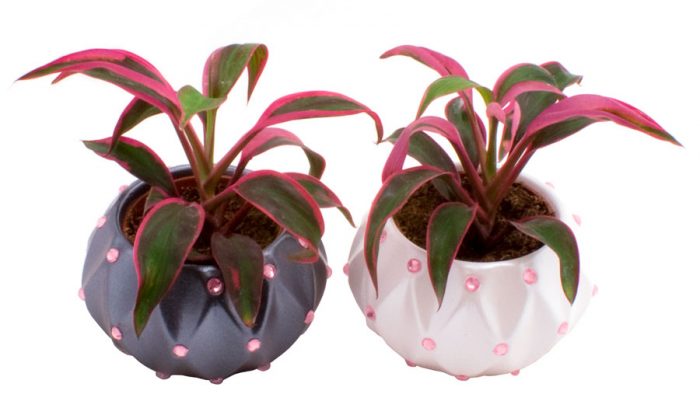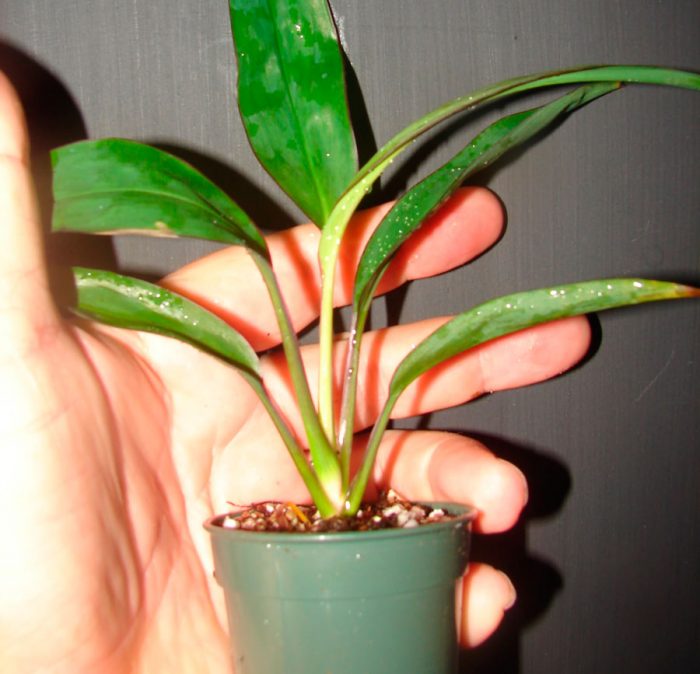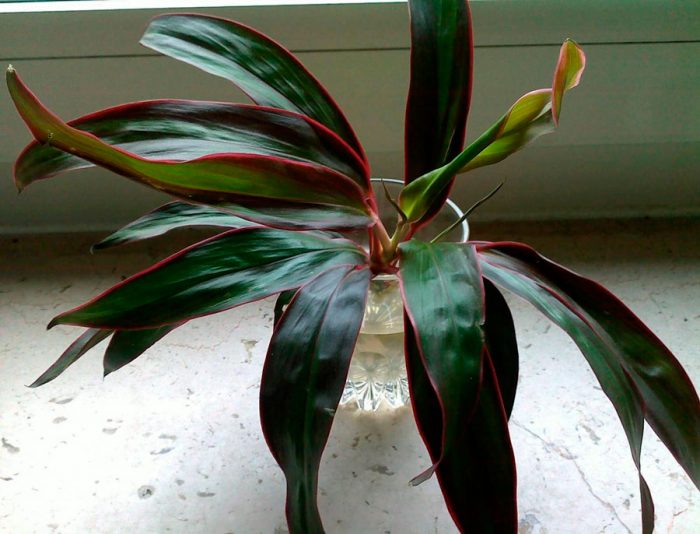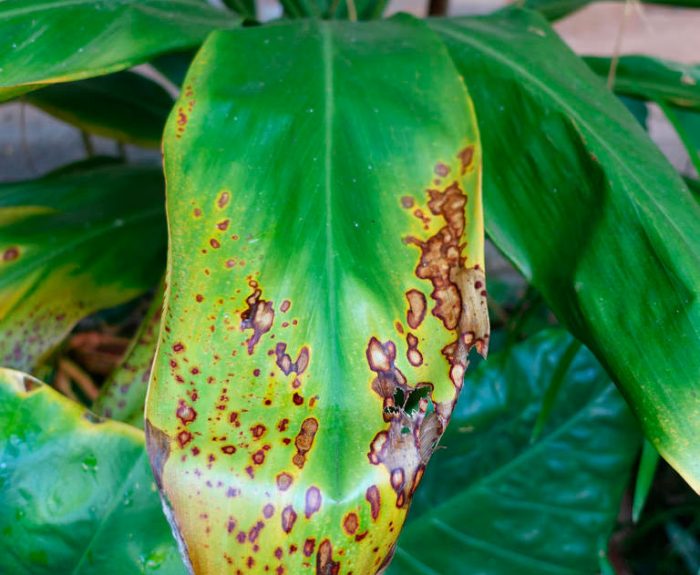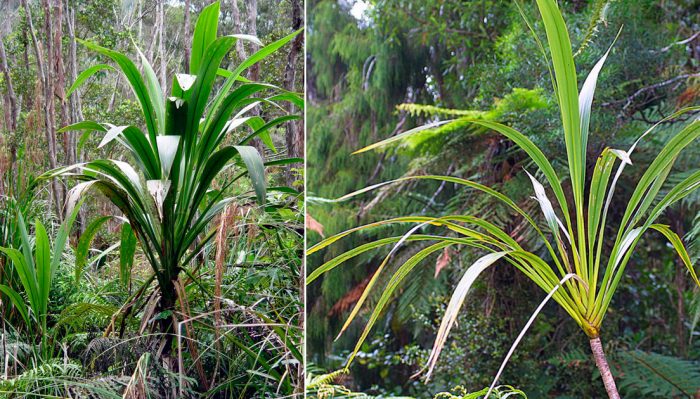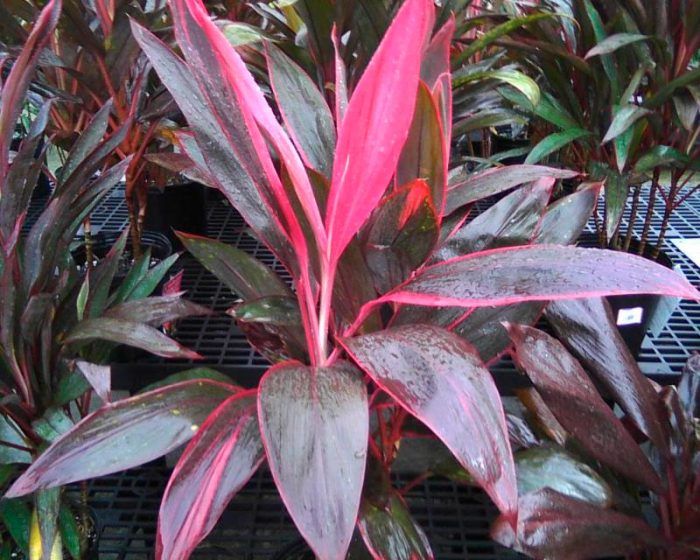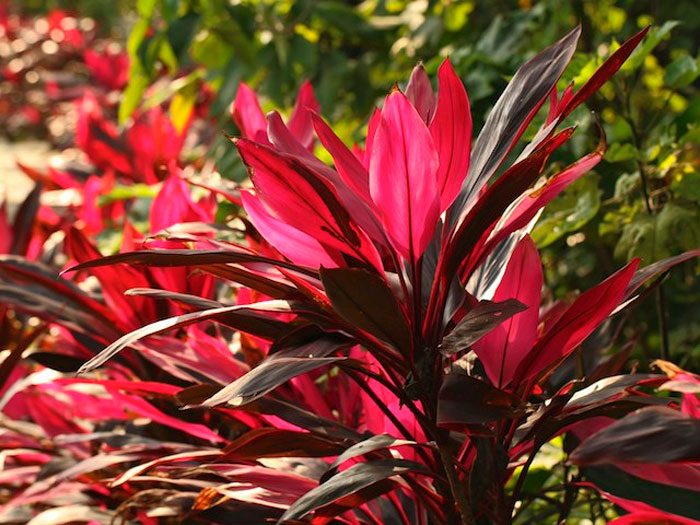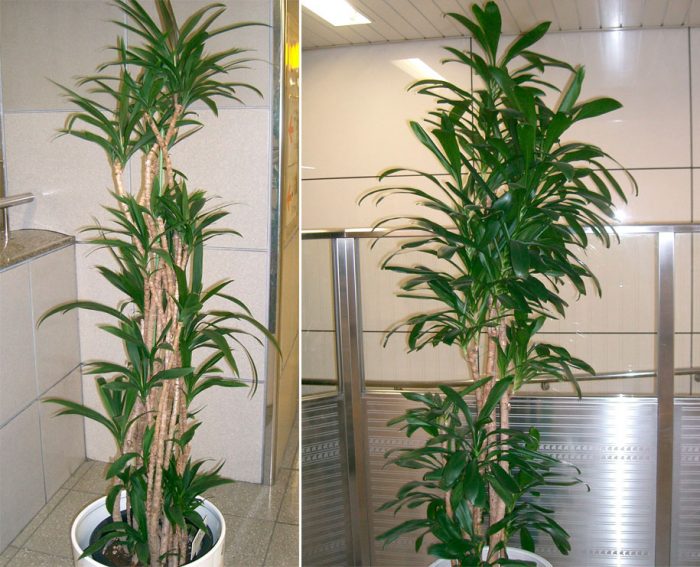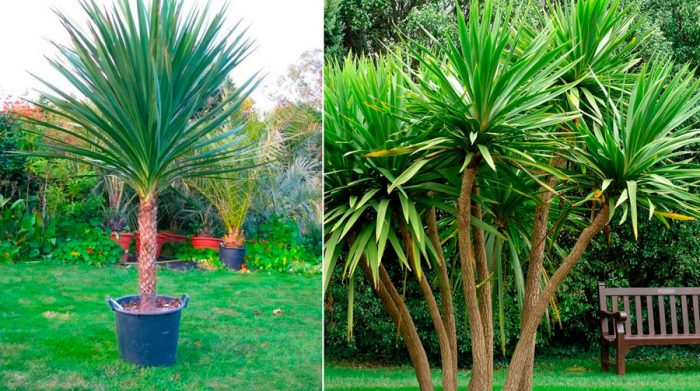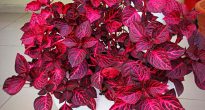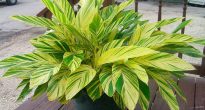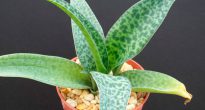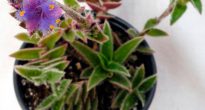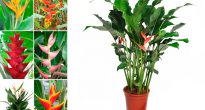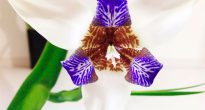Cordilina (Cordyline), according to information taken from various sources, is a representative of the Agave or Dracene family. This genus unites about 20 different species. Under natural conditions, this plant can be found in all regions with tropical and subtropical climates. Cordilina is a tree or shrub. Thick and strong roots are white in cross-section. The shape of the leaf plates depends on the type of plant and can be lanceolate, xiphoid or linear. As a rule, the flowers are colored white or red, less often purple. When growing cordilina at home, the bush usually has a height of no more than 150 centimeters. Over time, the lower leaf plates of the bush begin to die off and fall off, as a result, it takes on the appearance of a false palm. Florists cultivate cordilina because it has spectacular foliage.
Content
Caring for cordilina at home
Illumination
Cordilina, grown indoors, needs bright sunlight, but it must be diffused. In this regard, it is best to place it near a window located in the western or eastern part of the room. Remember to protect the plant from direct sunlight. If the bush belongs to a dark-leaved variety, then it does not need bright lighting.
Temperature regime
In summer, in the room where the plant is located, the air temperature should be equal to 20-25 degrees. When growing subtropical species, with the onset of the autumn period, the temperature should be gradually reduced, and in winter, it needs a temperature of 5-10 degrees. If tropical species are grown, then in winter they need to be placed in a cooler place with a temperature of 18 to 20 degrees. Such plants must be protected from drafts.
How to water
In spring and summer, this plant must be watered immediately after the top layer of the substrate dries out. In winter, you should choose such a watering regime so that the earthen lump in the pot never completely dries out, however, it does not need to be waterlogged. Those species that are at low temperatures in winter should be watered with extreme caution. For irrigation, use extremely soft water that has settled well for at least 24 hours.
Spraying
This plant should not be placed near heating appliances in winter. If subtropical species are grown, then you only need to moisten them with a sprayer from time to time. And tropical species in May – August are moistened with a spray bottle at least 1 time per day. Moisturize cordilina with soft and settled water. When spraying the bush, you need to be careful, as this can rot the growth points.
Fertilizer
In spring, summer and autumn, the bush needs to be fed once a week with complex fertilizer. In winter, the plant is fed once every 4 weeks.
Transfer
Young plants should be transplanted once a year, and adult specimens should be transplanted once every 2 or 3 years. In the case when the roots cease to fit into the pot, the cordiline needs to be transplanted into a new larger container, which is carried out with the onset of the spring period. Before planting a bush, a good drainage layer must be made at the bottom of the container, then it is filled with a slightly acidic soil mixture consisting of sand, garden soil and peat, which must be taken in a ratio of 1: 3: 1. This plant is suitable for hydroponic cultivation.
Reproduction of cordilina
How to grow from seeds
Seed propagation is only suitable for species of plants. The fact is that when grown from seeds of varietal cordilins, they lose the varietal characteristics of the parent plants. Sowing seeds is carried out in the first half of March, for this they use a soil mixture consisting of turf and sand (1: 1). The emergence of seedlings is uneven, the first of them are shown after 4 weeks, and the last - after 3 months.
Cordilina propagation by cuttings
When cutting a cutting, it should be noted that there must be at least 1 knot on it. For rooting, you can use the apical cuttings, as well as parts of the leafless shoot. However, it should be noted that the stalk must be necessarily semi-lignified. For rooting cuttings, you can use sand or a substrate consisting of peat soil, leaf or humus soil and sand (1: 1: 1). The cuttings must be regularly moistened with a spray bottle, and they must be placed in a warm place (25-30 degrees). If you take care of the cuttings correctly, then after about 4 weeks they can be planted in separate pots filled with a soil mixture consisting of humus, peat and turf soil, as well as sand (1: 1: 1: 1). For the subsequent transplant, which is carried out by the transshipment method, a soil mixture is used, which includes compost or sod and humus soil, as well as sand (1: 1: 1).
Reproduction by division
If cordilina is propagated by the method of dividing the rhizome, then all the roots should be cut off at the delenka, and then it is planted in a substrate that is used for rooting cuttings. After the roots reappear at the rhizome, it should be transplanted into the soil mixture used for planting adult specimens.
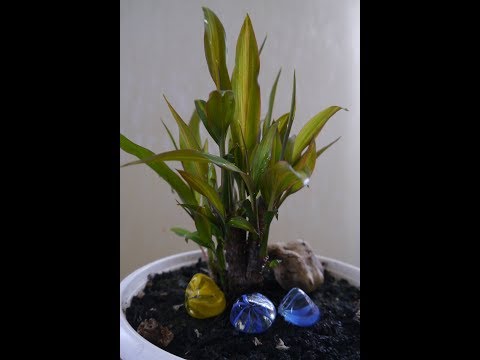

Watch this video on YouTube
Diseases and pests
- The foliage has brown spots - If spots of brown color appear on the leaf plates of the cordilina, this indicates that the plant does not have enough moisture.
- Falling foliage - The dying off and falling off of the lower leaf plates is a natural process for this plant, so you should not worry.
- Rotting bush - If moisture stagnation is observed in the substrate, this can cause rot on the lower part of the stem. In this case, it is recommended to cut off the top of the bush, which is used for further rooting.
- Specks on leaf plates - If dry spots of a light color appear on the foliage, then this indicates that sunburn has appeared on the plant as a result of direct sunlight hitting it.
- Twisting the foliage - If the room is too cold, then the foliage of the cordiline loses its turgor and curls.
- The tips of the leaf plates turn brown - If the tips and edges of the sheet plates turn brown, it means that the room has an extremely low air humidity.
Cordilina pests
Can harm such a flower spider mite, shield, whitefly and mealybug.
Types of cordilina with photos and names
Cordyline banksii
The height of the bush can vary from 150 to 300 cm. The straight trunk is rather thin. The leaf plates have long petioles, the length of which is 15 to 30 centimeters. The upwardly elongated lanceolate leaf plates are pointed towards the apex; they are about 150 centimeters long and about 8 centimeters wide. The front surface of the leaves is green and the back is gray-green. The large paniculate inflorescence consists of white flowers. Recommended for growing in a cool room.
Cordilina apical (Cordyline terminalis)
Either bush cordilina (Cordyline fruticosa), or apical dracaena (Dracaena terminalis). This shrub has a thin trunk. A bush may have several trunks. The length of the lanceolate leaf plates is about half a meter, and the width is about 10 centimeters, there are veins on the surface. They are colored green or have a variegated color (with a purple tint). The length of the petiole is about 15 centimeters.
Cordilina red (Cordyline rubra).
Or red dracaena (Dracaena rubra). The height of such a shrub is about four meters, as a rule, it is unbranched. Green lanceolate leaf plates, leathery to the touch, reach about half a meter in length and about 5 centimeters in width, there are veins on the surface. The length of the grooved petioles is about 15 centimeters. Axillary paniculate inflorescence consists of lavender flowers, located on short pedicels. Recommended for growing in a cool room.
Cordilina undivided (Cordyline indivisa)
Or undivided dracaena (Dracaena indivisa). This plant is a tree that reaches a height of 12 meters. The thin barrel does not bend because it is hard enough. The length of the belt-like sheet plates is about one and a half meters, and the width is about 15 centimeters. The central vein is red in color. The front surface of the foliage is of a matte green color, and the back is of a pale bluish color. The branched drooping inflorescence consists of white flowers. Grows best when kept cool.
Cordyline stricta
Either dracaena congesta (Dracaena congesta), or straight dracaena (Dracaena stricta). The height of the thin trunk is about 3 meters. Leaf plates leathery to the touch have a serrated edge and a green color, their shape is elongated-lanceolate, sharpened at the top. In length, the leaves reach a little more than 50 centimeters, and their width is about 30 mm. The panicles are composed of small lavender flowers. Inflorescences grow from the axils of the leaves, and are also located at the top of the plant.
Southern cordilina (Cordyline australis)
Or southern dracaena (Dracaena australis). This species is a tree with a height of about 12 meters. The trunk expanding towards the base does not bend. Sessile xiphoid green leaf plates leathery to the touch have a wide central vein of light color. White flowers have a pleasant aroma.
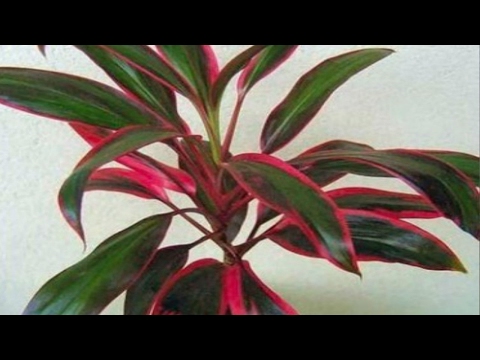

Watch this video on YouTube

